
How to Use BMS 2S 20A: Examples, Pinouts, and Specs
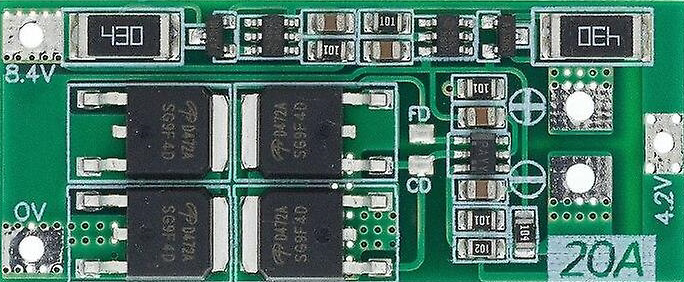
 Design with BMS 2S 20A in Cirkit Designer
Design with BMS 2S 20A in Cirkit DesignerIntroduction
The BMS 2S 20A is a Battery Management System designed for 2-series lithium-ion battery packs. Manufactured by Arduino (Part ID: UNO), this component ensures the safe operation of lithium-ion batteries by monitoring and managing their charging and discharging processes. It provides overcharge, over-discharge, and overcurrent protection, making it an essential component for battery-powered systems.
Explore Projects Built with BMS 2S 20A
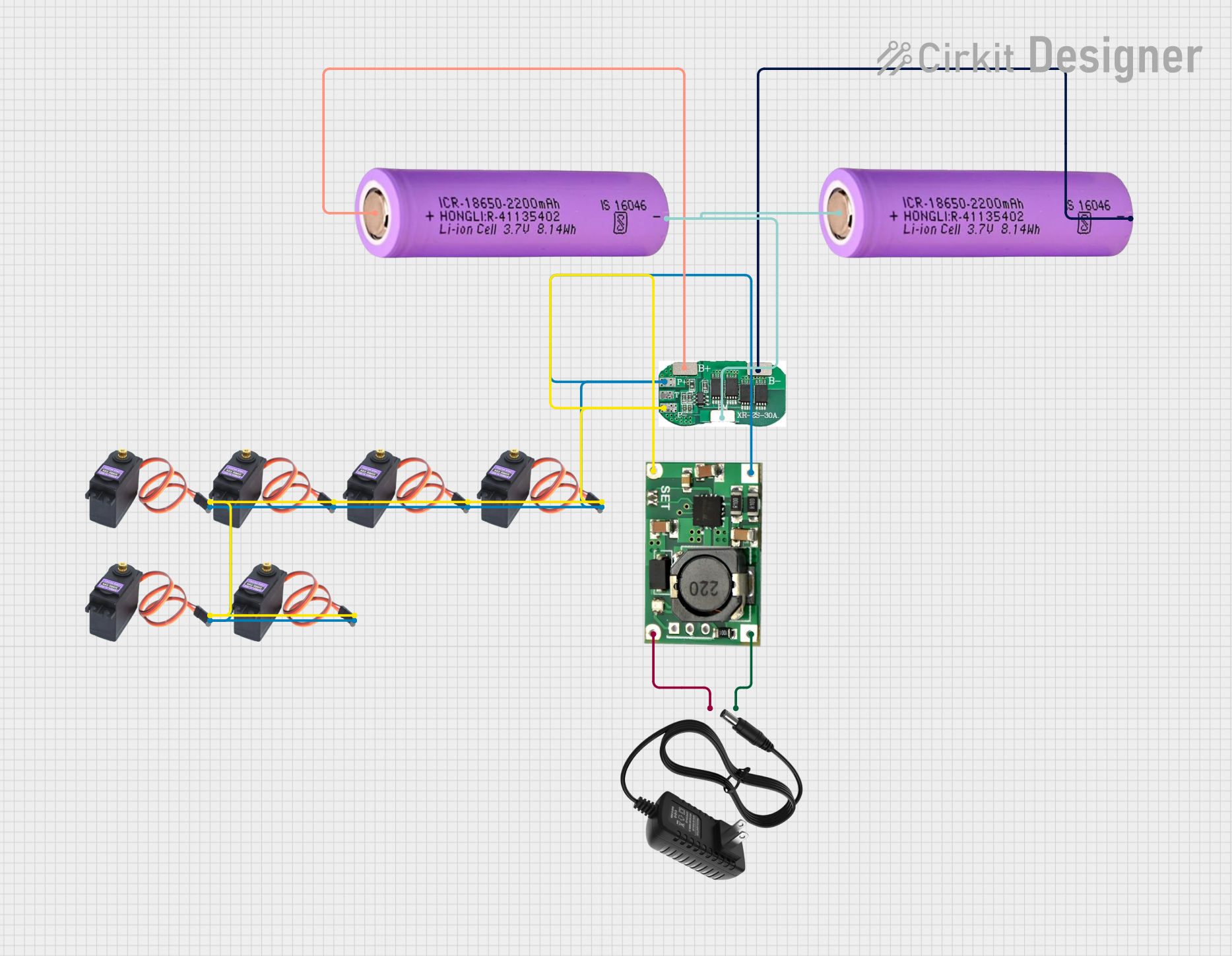
 Open Project in Cirkit Designer
Open Project in Cirkit Designer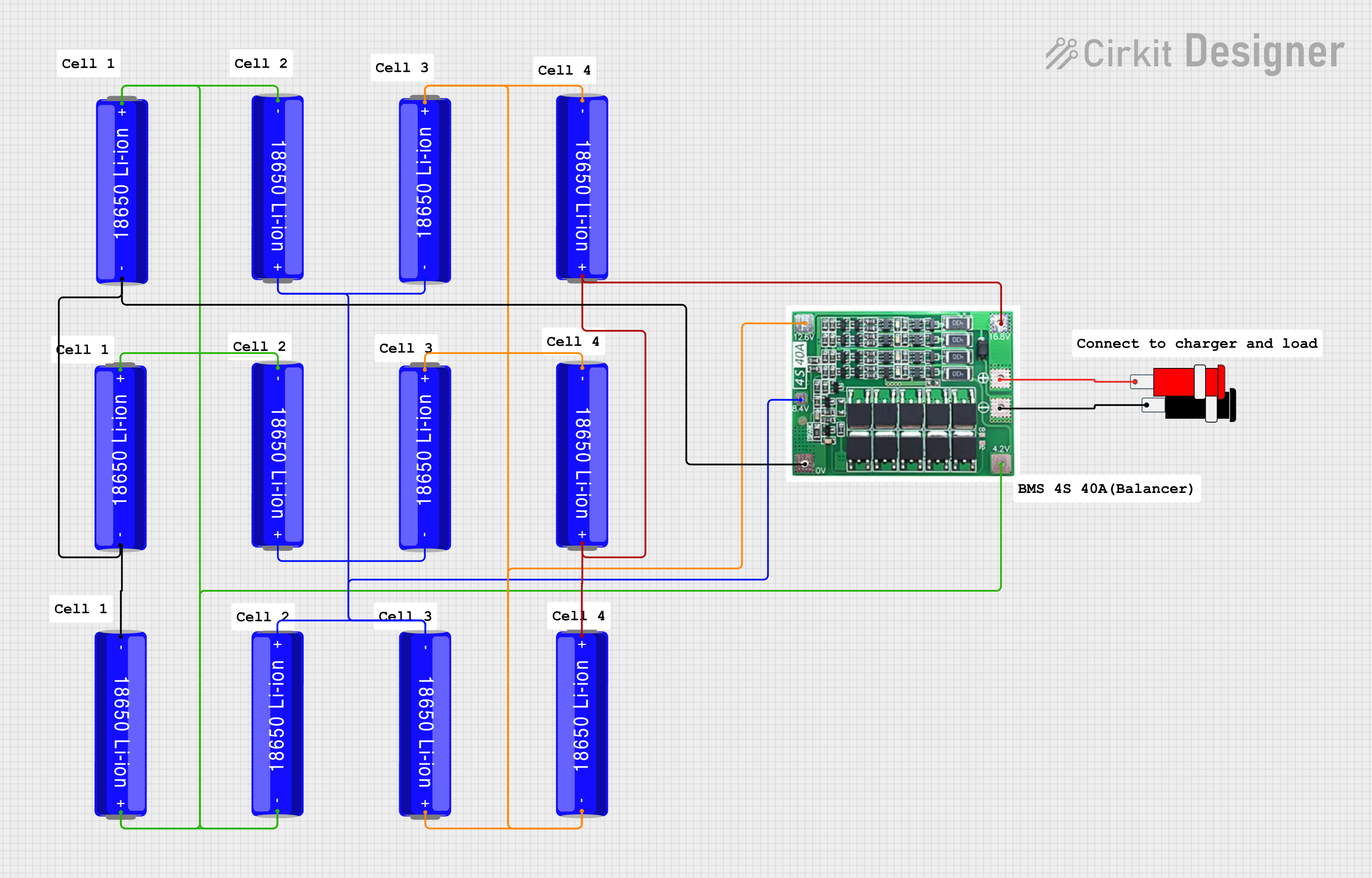
 Open Project in Cirkit Designer
Open Project in Cirkit Designer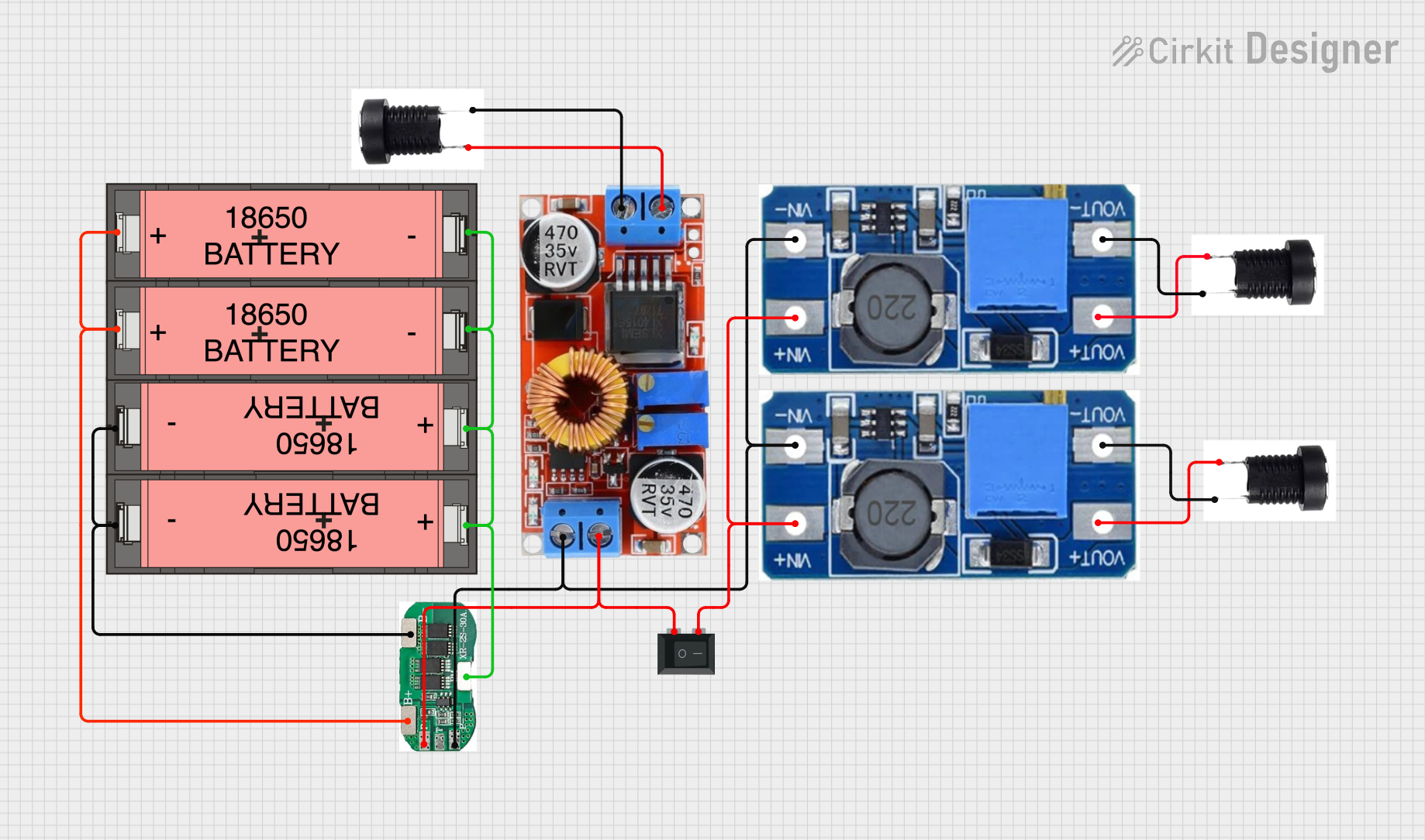
 Open Project in Cirkit Designer
Open Project in Cirkit Designer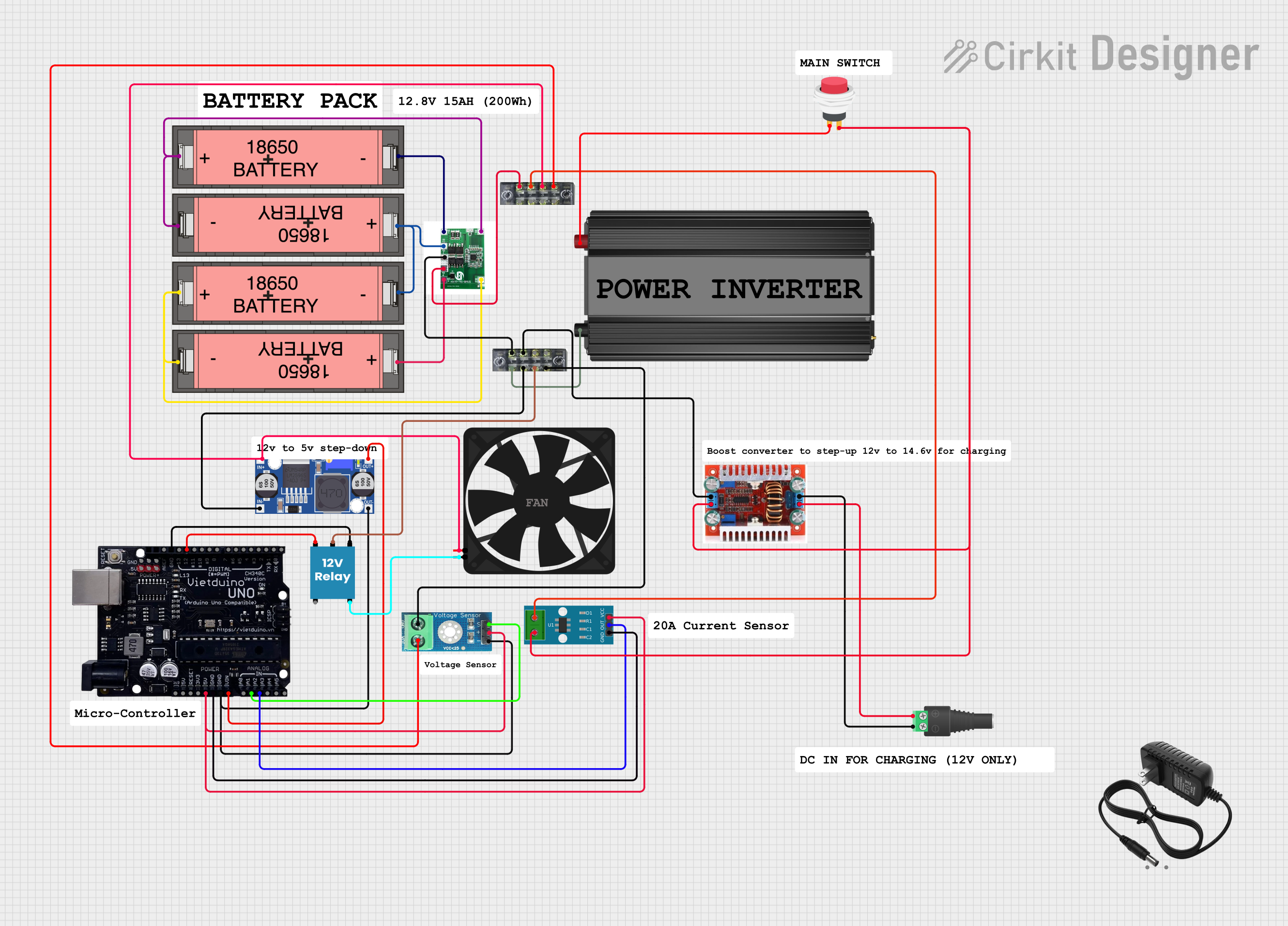
 Open Project in Cirkit Designer
Open Project in Cirkit DesignerExplore Projects Built with BMS 2S 20A

 Open Project in Cirkit Designer
Open Project in Cirkit Designer
 Open Project in Cirkit Designer
Open Project in Cirkit Designer
 Open Project in Cirkit Designer
Open Project in Cirkit Designer
 Open Project in Cirkit Designer
Open Project in Cirkit DesignerCommon Applications and Use Cases
- Lithium-ion battery packs for portable electronics
- Electric bicycles and scooters
- Solar energy storage systems
- Uninterruptible Power Supplies (UPS)
- Robotics and IoT devices
Technical Specifications
The following table outlines the key technical specifications of the BMS 2S 20A:
| Parameter | Value |
|---|---|
| Manufacturer | Arduino |
| Part ID | UNO |
| Battery Configuration | 2 Series (2S) |
| Maximum Continuous Current | 20A |
| Overcharge Protection Voltage | 4.25V ± 0.05V per cell |
| Over-discharge Protection Voltage | 2.5V ± 0.05V per cell |
| Overcurrent Protection | 20A ± 2A |
| Operating Temperature | -40°C to 85°C |
| Dimensions | 50mm x 20mm x 3mm |
Pin Configuration and Descriptions
The BMS 2S 20A has the following pin configuration:
| Pin Name | Description |
|---|---|
| B+ | Positive terminal of the battery pack |
| B- | Negative terminal of the battery pack |
| P+ | Positive terminal of the load/charger |
| P- | Negative terminal of the load/charger |
Usage Instructions
How to Use the BMS 2S 20A in a Circuit
Connect the Battery Pack:
- Connect the positive terminal of the 2-series battery pack to the
B+pin. - Connect the negative terminal of the battery pack to the
B-pin.
- Connect the positive terminal of the 2-series battery pack to the
Connect the Load/Charger:
- Connect the positive terminal of the load or charger to the
P+pin. - Connect the negative terminal of the load or charger to the
P-pin.
- Connect the positive terminal of the load or charger to the
Verify Connections:
- Double-check all connections to ensure proper polarity and secure contacts.
- Incorrect connections may damage the BMS or the battery pack.
Power On:
- Once all connections are secure, the BMS will automatically manage the charging and discharging of the battery pack.
Important Considerations and Best Practices
- Battery Compatibility: Ensure the BMS is used with a 2-series lithium-ion battery pack. Using it with a different configuration may result in improper operation or damage.
- Current Rating: Do not exceed the maximum continuous current rating of 20A to avoid triggering overcurrent protection.
- Heat Dissipation: If operating near the maximum current rating, ensure adequate ventilation or heat dissipation to prevent overheating.
- Testing: Before integrating the BMS into a final product, test it with a dummy load to verify proper operation.
Example: Using the BMS 2S 20A with an Arduino UNO
The BMS 2S 20A can be used in projects involving an Arduino UNO to monitor battery voltage. Below is an example code snippet to read the voltage of a 2S battery pack using the Arduino UNO's analog input:
// Define the analog pin connected to the battery voltage divider
const int batteryPin = A0;
// Define the voltage divider ratio (adjust based on your resistor values)
// Example: R1 = 10k, R2 = 10k, so the ratio is 2
const float voltageDividerRatio = 2.0;
// Define the reference voltage of the Arduino UNO (5V for most boards)
const float referenceVoltage = 5.0;
// Define the ADC resolution (10-bit for Arduino UNO)
const int adcResolution = 1024;
void setup() {
// Initialize serial communication for debugging
Serial.begin(9600);
}
void loop() {
// Read the raw ADC value from the battery pin
int rawValue = analogRead(batteryPin);
// Calculate the battery voltage
float batteryVoltage = (rawValue * referenceVoltage / adcResolution) * voltageDividerRatio;
// Print the battery voltage to the serial monitor
Serial.print("Battery Voltage: ");
Serial.print(batteryVoltage);
Serial.println(" V");
// Wait for 1 second before the next reading
delay(1000);
}
Note: Use a voltage divider circuit to step down the battery voltage to a safe level for the Arduino's analog input (maximum 5V).
Troubleshooting and FAQs
Common Issues and Solutions
BMS Not Powering On:
- Cause: Incorrect wiring or loose connections.
- Solution: Verify all connections and ensure proper polarity.
Overcurrent Protection Triggering Frequently:
- Cause: Load current exceeds the 20A limit.
- Solution: Reduce the load current or use a BMS with a higher current rating.
Battery Not Charging:
- Cause: Charger voltage is too low or connections are incorrect.
- Solution: Ensure the charger voltage matches the battery pack's requirements and verify connections.
Over-discharge Protection Activating Prematurely:
- Cause: Faulty battery cells or incorrect BMS settings.
- Solution: Test the battery cells individually and replace any faulty cells.
FAQs
Q1: Can the BMS 2S 20A be used with other battery chemistries?
A1: No, this BMS is specifically designed for 2-series lithium-ion battery packs. Using it with other chemistries may result in improper operation or damage.
Q2: How do I reset the BMS after overcurrent protection is triggered?
A2: Disconnect the load and wait a few seconds. The BMS will automatically reset once the fault condition is cleared.
Q3: Can I use this BMS for a 3S battery pack?
A3: No, this BMS is designed for 2-series (2S) battery packs only. Using it with a 3S pack may cause improper operation or damage.
Q4: Is the BMS waterproof?
A4: No, the BMS 2S 20A is not waterproof. Avoid exposing it to moisture or liquids.